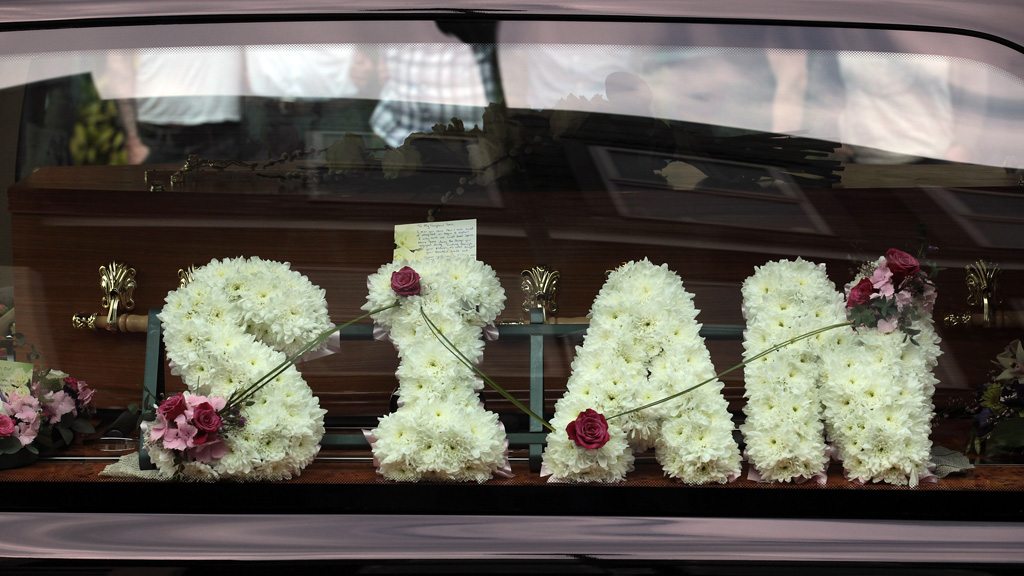Two murders, but only one conviction
 Andy Davies
Home Affairs Correspondent
Andy Davies
Home Affairs Correspondent
As Christopher Halliwell is jailed for murdering Sian O’Callaghan, Channel 4 News reports on how police tactics led to the collapse of another murder prosecution.

“You think I did it?” says Halliwell, still handcuffed. “I know you did it,” replies Steve Fulcher. “Tell me where Sian is.”
The conversation lasted nine minutes. Detective and suspect, shadowed by a note-taker, stood atop a remote hillside, 50 yards from the officer’s car, in a desperate attempt by one to break the other.
This was what Dept Supt Steve Fulcher, the senior investigating officer leading the hunt for Sian O’Callaghan, would later describe as a “last appeal” to Christopher Halliwell to “do the right thing” and to admit what he had done with Sian – “What any parent could hope a police officer would do for their child.”
It worked. Fulcher kept asking Halliwell what he’d done with Sian. “If you tell me where Sian is, you will have done the right thing”. Halliwell kept repeating he wanted to speak to a solicitor. Fulcher ignored it, asking again and again: “Tell me where Sian is”.
Eventually Halliwell broke. “Have you got a car?” he said, “Let’s go”.
DS Fulcher knew he was potentially about to solve a crime which was generating national headlines. This was an “emergency situation”, as he would later recall in court, a “crime in action” and his actions would have a profound impact on this case.
But he knew also that, as a colleague put it to him at the time, his whole strategy was “sailing close to the wind” in terms of the law governing police investigations.
No caution
After Halliwell had been arrested at 11:06 on 24 March in the Asda Walmart car park of Swindon, he was immediately questioned in an unmarked police car by officers under an “urgent interview” strategy. He gave nothing away. Halliwell was soon being driven the short journey back to Gable Cross police station when Fulcher intervened on the radio. “Stop,” he told his officers. “You’ve got to go somewhere else.”
That was when he directed them to take Halliwell to a hillside car park at Barbury Castle, an area popular with walkers and horseriders, where his own questioning of the suspect began. He didn’t caution Halliwell, as the law dictates he should have. He just started questioning him, reluctant to “interrupt the flow”.
It would turn out to be a hugely controversial move, but one which would trigger an astonishing sequence of events.
Halliwell, having earlier asked if Fulcher had a car, directed them to a remote rural location about 20 miles away, beside the B4507, on the Lambourne Downs in south Oxfordshire. He was subdued, calm, recalls Fulcher. “It was as if a weight had been lifted off his shoulders.” He couldn’t immediately locate Sian’s body, but he gave them enough information to search a small area.
Sian would later be found laying face down and naked from her waist to her ankles. She had been sexually assaulted by Halliwell. She had two stab wounds to the head and neck.
Why’ve I done this? Normal people don’t go round killing each other. Christopher Halliwell
As Fulcher prepared to order that Halliwell be taken back to the police station, Sian’s killer turned to him once again and suggested that they “have a chat”.
Steve Fulcher directed that they be driven to a remote spot away from the road. The two men walked about 100 yards up the hill, still followed by Debbie Peach, the note-taker, and sat down.
Interview with Becky Godden-Edwards’ cousin, Laura Mullane
Becky Godden-Edwards
Halliwell started smoking a cigarette. He then addressed the detective once again. “I’m a sick f*****” he told him. “Do you want another one?”
Once again Fulcher failed to caution Halliwell. They got back into the police car and, at 1.53pm, drove to a field around 30 miles away near the village of Eastleach in south Gloucestershire.
“Why’ve I done this?” Halliwell said during the journey, “Normal people don’t go round killing each other”.
When they arrived at Baxter’s farm, Halliwell climbed over a low stone wall and, placing one foot in front of another, began pacing his way into the 40-acre field. Suddenly he stopped. This is where he had buried another young woman. Her name, it would later transpire, was Becky Godden-Edwards.
She’d been missing from Swindon since December 2002.

Halliwell would eventually be returned to the police station. There he met a solicitor and offered “no comment” to any further questioning. He was eventually charged at a police station with the murders of both Sian and Becky.
‘Flagrant breaches’
However, at a hearing earlier this year at Bristol Crown Court, only reportable now, Halliwell’s legal team challenged the actions of Steve Fulcher. They argued that by diverting Halliwell from the police station that morning and repeatedly failing to caution and remind the suspect of his right to silence, Fulcher had committed “flagrant breaches” of the Police and Criminal Evidence Act (PACE).
Steve Fulcher argued in court that there was a greater priority at stake. “My view,” he said, “was that Sian’s right to life was more important than a PACE-compliant interview… I appealed to him to do the right thing and, to his credit, he did”.
Fulcher was asked if the ends justfied the means. “In this case, it did,” he replied. The Chief Constable of Wiltshire Police, Pat Geenty, described Steve Fulcher’s actions as “gutsy”, adding: “I would like to think I’d make the same decision in similar circumstances”.
Mrs Justice Cox, however, did not accept, in this case, that the ends justified the means. Although accepting that he had a “moral judgment” to make and his anxieties were fully understandable, she found that the detective’s actions had been oppressive and threatening (referring to earlier assertions made by Fulcher to Halliwell that he would be “vilified in the press”).
It was mandatory that he should have cautioned Halliwell. She concluded: “Nothing in PACE or the codes, or in any of the authorities to which my attention was drawn, suggests that these provisions can be ignored because of overriding operational issues of the kind which arose in this case.
“These were indeed significant and substantial breaches of the codes, in circumstances deliberately designed to persuade the defendant to speak.”
Inadmissable
The judgment had far reaching and, for Becky’s family, devastating implications.
It meant that from the moment Halliwell was diverted to Barbury Castle to the point at which he returned later that afternoon to the police station, the whole sequence of events and confessions was ruled entirely “inadmissable” in court.
The police had no other evidence to link Christopher Halliwell, Sian’s killer, to Becky Godden-Edwards.
The charge of murder in respect of Becky, although still “lying on file” could no longer be pursused in court.